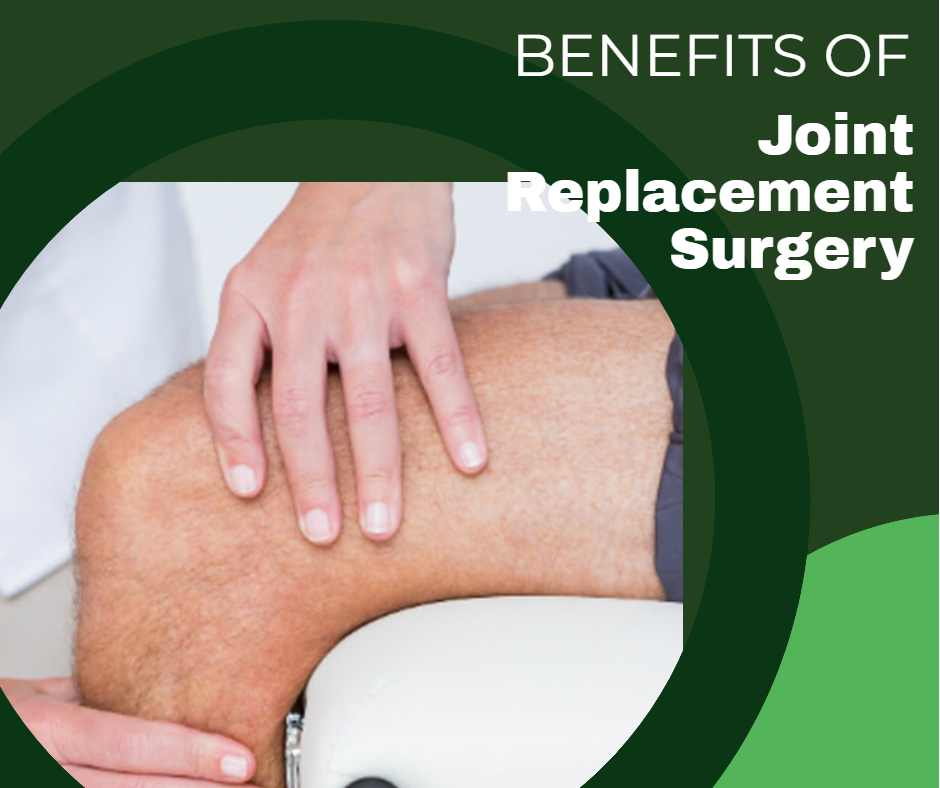Joint replacement surgery is a medical procedure in which a person’s damaged joint is replaced with an artificial joint. The surgery is often used to relieve pain and improve mobility for people suffering from joint problems such as osteoarthritis, rheumatoid arthritis, and traumatic injury. Joint replacement surgery can be a life-changing experience, offering relief from pain, improved mobility, and improved quality of life. Dr. Hrishikesh Patkar is a renowned orthopedic surgeon and joint replacement specialist based in Shivaji Nagar, Pune.
The benefits of joint replacement surgery are numerous. It can reduce or eliminate pain, improve function and range of motion, and improve a patient’s ability to perform daily activities. It can also help reduce the risk of future joint problems and improve overall health and quality of life. Joint replacement surgery is also a relatively safe and effective procedure, with a high success rate.
Purpose of Joint Replacement Surgery:
Joint replacement surgery is a procedure that replaces a damaged or worn-out joint with a prosthetic implant. It is usually done to relieve pain and improve mobility in conditions such as arthritis, degenerative joint diseases, and deformities. Joint replacement surgery can also be used to reconstruct a joint after an injury or accident.
Some Types of Joint Replacement Surgeries:
1. Partial/Total Hip Replacement-
Partial hip replacement is a surgical procedure to replace the hip’s ball-and-socket joint with a prosthetic device. This procedure is usually reserved for people with severe arthritis or a hip joint fracture. The prosthetic device is typically made of metal or ceramic and is designed to replicate the natural hip joint.
Total hip replacement is a more extensive procedure than partial hip replacement. This procedure involves replacing both the ball-and-socket joint and the surrounding bones. The surgeon will remove the femoral head and neck during the procedure and replace them with prosthetic components. Total hip replacement is used for people with severe arthritis, hip fractures, and other conditions that cause pain and disability.
2. Total Knee Replacement-
Total knee replacement (TKR) is a surgical procedure to replace all or part of the knee joint with an artificial joint made of metal and plastic components. The procedure is performed under general anesthesia and involves removing damaged bone and cartilage from the thighbone, shinbone, and kneecap, and then replacing the damaged area with metal and plastic parts. The artificial joint is designed to move just like a natural knee joint.
TKR can improve joint function, reduce pain, and help improve mobility and quality of life. Recovery from TKR can take several months and may require physical therapy and lifestyle changes. The success of the surgery depends on several factors, including the patient’s age, activity level, and overall health.
3. Partial/Total/Reverse Shoulder Joint Replacement-
Partial shoulder joint replacement is a surgical procedure in which only the damaged parts of the shoulder joint are replaced with artificial components. This procedure is usually done to reduce pain in the shoulder joint caused by arthritis or a fracture. Total shoulder joint replacement is a more involved procedure in which the entire shoulder joint is replaced with artificial components. This is usually done to treat severe shoulder pain caused by severe arthritis or a severe fracture. Reverse shoulder joint replacement is a more complex procedure in which the shoulder joint is completely replaced with an artificial component but the orientation of the joint is reversed. This procedure is often used to treat severe shoulder pain caused by rotator cuff tears.
4. Total Elbow Replacement-
Total elbow replacement is a type of joint replacement surgery used to treat severe damage to the elbow joint. It involves replacing all three bones that make up the elbow joint (the humerus, ulna, and radius) with a prosthetic device. The procedure is usually performed on patients with severe arthritis or trauma who have not had success with other forms of treatment. The procedure can help restore mobility and reduce pain.
5. Complex And Revision Joint Replacement-
Complex joint replacement or revision joint replacement is a surgical procedure in which a damaged or worn out joint is replaced with an artificial joint. Complex joint replacement is a more complicated procedure than typical joint replacement, and is often used for patients who have failed to respond to traditional treatment methods. This type of surgery may involve more complex techniques, the use of specialized implants, or the need to use multiple implants. It is often used to replace joints that have been damaged due to arthritis, trauma, or degenerative joint diseases.
Benefits of Joint Replacement Surgery
1. Improved Mobility: Joint replacement surgery can replace a worn out, damaged or painful joint with an artificial implant. This can help increase mobility and reduce pain in the affected joint.
2. Improved Quality of Life: Joint replacement can improve a patient’s quality of life by reducing pain and improving mobility. This can make it easier to do everyday activities, such as walking and climbing stairs.
3. Reduced Risk of Falls: Falls can be more likely in older individuals with chronic joint pain. Joint replacement can help reduce the risk of falls by improving mobility and reducing pain.
4. Reduced Risk of Infection: Infections can be a serious complication of joint replacement surgery, but the risk can be minimized with proper pre-operative care and post-operative follow-up.
5. Improved Range of Motion: After joint replacement surgery, the patient may experience an improved range of motion in the affected joint, making it easier to perform everyday activities.
Recovery Process
1. Pre-operative preparation: This includes a physical exam, blood tests, and other tests to make sure you are healthy enough for the surgery. You may also receive instructions on how to prepare yourself for the surgery, such as quitting smoking and losing weight.
2. Surgery: The surgery typically takes several hours and is done under general anesthesia. During the surgery, the damaged joint is removed and replaced with an artificial joint.
3. Post-operative care: After the surgery, you will be taken to a recovery room and monitored. You will likely be given pain medication and antibiotics to reduce the risk of infection.
4. Physical therapy: You will need to start physical therapy soon after the surgery to help you regain strength and mobility in the affected joint.
5. Full recovery: It can take up to six months to fully recover from joint replacement surgery. During this time, you may need to use assistive devices such as crutches or a walker. You may also need to continue physical therapy to ensure a full recovery.
Summary of the benefits of joint replacement surgery
Joint replacement surgery offers many benefits for those suffering from joint pain and disability. It can help to reduce pain, improve joint function and range of motion, and increase mobility. It can also help to improve the quality of life and daily activities. Additionally, it may offer the potential for long-term relief from joint pain and disability.
Consult Dr. Hrishikesh Patkar for the best joint replacement surgeon in Shivaji nagar, Pune. He has extensive experience in performing hip and knee replacement surgeries, as well as other joint replacement procedures. He is highly skilled in the use of minimally invasive techniques and robotic-assisted surgery to provide superior outcomes. He is also experienced in treating complex cases and revision surgeries. He is committed to providing quality care and excellent patient outcomes.


